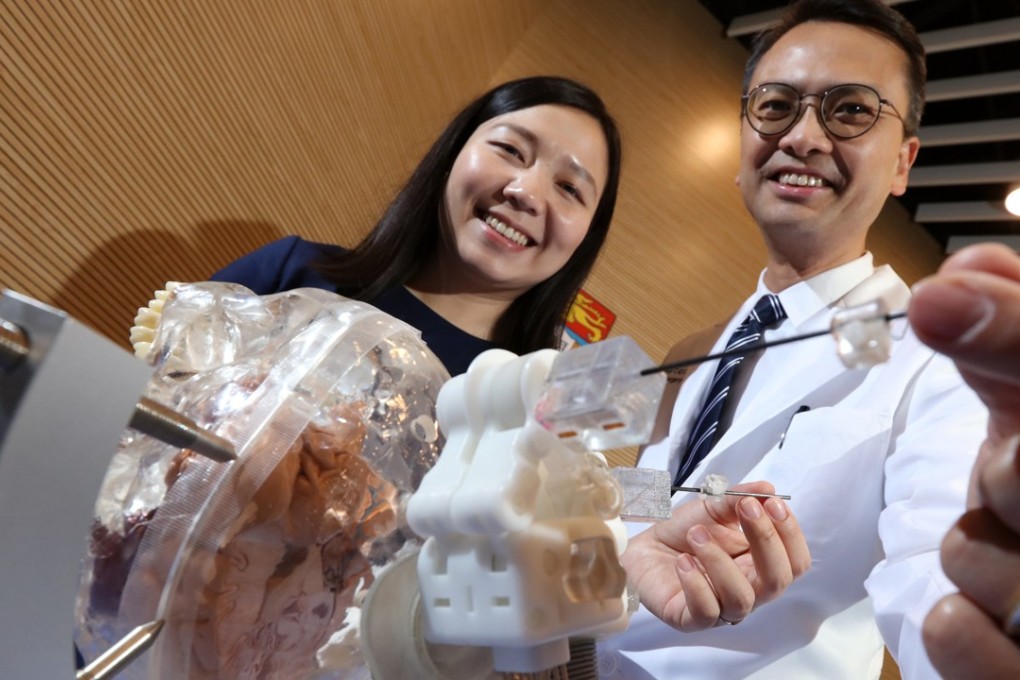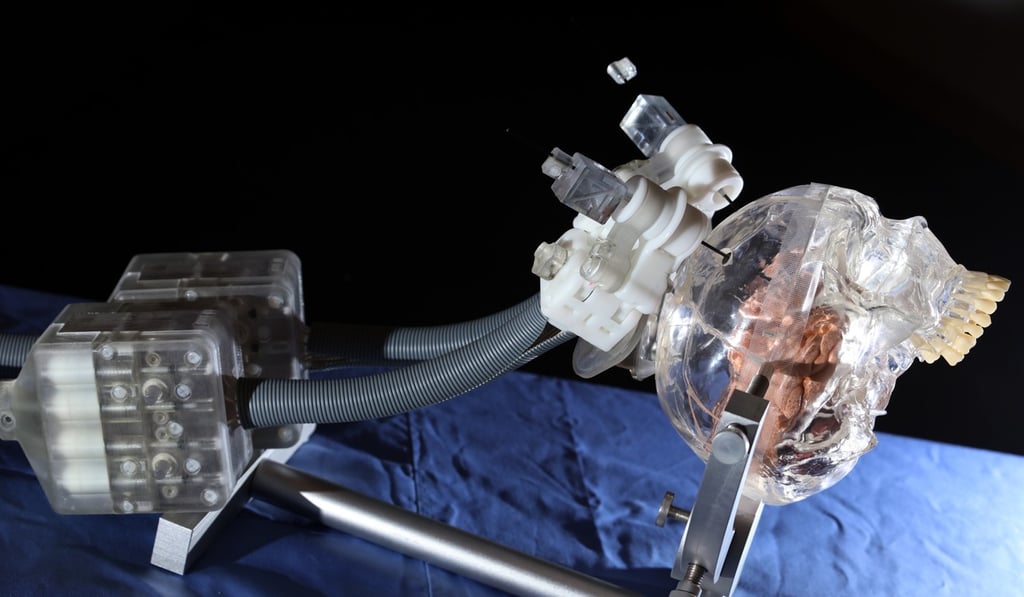Hong Kong engineers develop world’s first robotics system capable of performing brain surgery inside an MRI scanner
Device greatly reduces time needed for delicate operation to treat illnesses such as Parkinson’s disease

Hong Kong engineers have developed the world’s first robotics system capable of performing brain surgery inside an MRI scanner, paving the way for more accurate and efficient treatment of illnesses such as Parkinson’s disease.
The new device also greatly reduces the time needed for the surgery, which can last up to a whole day, as it can simultaneously work on both sides of the brain.
Deep brain stimulation, a therapy performed through stereotactic neurosurgery, can help treat the symptoms of Parkinson’s disease, which afflicts the nervous system. The surgical process requires doctors to manually implant electrodes inside the brain.
However, the procedures require extreme accuracy to avoid damaging surrounding tissue.

Currently doctors are using robotic systems guided by magnetic resonance imaging (MRI) to perform the surgery. But the process cannot be done simultaneously while the MRI is in use due to interference from electromagnetic motors commonly used in robots.